Maryland’s Eastern Shore, stretching from the Chesapeake Bay to the Atlantic Ocean, is a vast landscape of farmland, tidal wetlands, and small towns, many of which retain their character and architecture of the past, thanks to significant preservation efforts. The Eastern Shore is about an hour and 20 minutes from DC, making it an easy day trip from the nation’s capital.
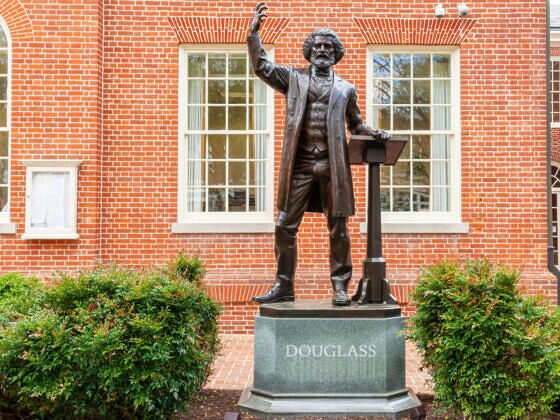

Exploring Maryland's Eastern Shore, Birthplace of Harriet Tubman and Frederick Douglass
It’s on the Eastern Shore that Harriet Tubman and Frederick Douglass, two of America’s most famous abolitionists, were born just a few miles apart. Both would become leaders in the US’s movement to end slavery in different ways: Douglass through public speeches and writing, and Tubman through her work with the Underground Railroad.
The Eastern Shore’s large population of free Blacks and vast system of waterways to aid in escape from the south made it an ideal setting for the birthplace of freedom.
“The Eastern Shore’s place in Black history is the greatest story that’s never been told,” says Dion Banks, President of the Eastern Shore Network for Change, a non-profit focused on reclaiming the narrative of African-American representation and revitalization. “From indigenous populations through enslavement through Civil Rights, this area continues to tell the story of Black history in America, and what is most unique about the region is that it has not changed.”

Downtown Easton, on Maryland’s Eastern Shore. Photo: grandbrothers/Shutterstock
That means that many places on Maryland’s Eastern Shore still stand as they did during the mid-19th century, allowing visitors to see historic sites as they were – something not possible in many other US cities and regions. If a visitor wants to stand on the wharf in Cambridge where slaves were brought to America and sold, it’s still there. They can then walk up the street and see the original courthouse where Tubman arranged the escape of her niece. The footprint of the region remains untouched.
Maryland’s Eastern Shore is not only the birthplace of America’s best-known freedom fighters, but also a region with countless landmarks celebrating African-American heritage. Here’s where to go to experience the most significant sites that commemorate Black History sites important not just to Maryland’s history, but to that of the entire United States.
The Harriet Tubman Underground Railroad State Park and Visitors Center

The center is also the start of the Harriet Tubman Scenic Byway. Photo: 010110010101101/Shutterstock
- Hours: Tuesday-Sunday, 10 AM-4PM. Closed Mondays.
- Costs: Free, but donations welcome
One of the Eastern Shore’s most important sites dedicated to Black history is the Harriet Tubman Underground Railroad State Park and Visitor Center, a 17-acre museum and park celebrating Tubman’s legacy. The interactive exhibits follow her life from childhood through adulthood, and explore her work as a civil rights worker, humanitarian, and suffragist. The museum has a theater, library, gift shop, meditation garden and a nature trail.
The center also serves as the gateway for the Harriet Tubman Scenic Byway.
Harriet Tubman Underground Railroad State Park and Visitor Center: 4068 Golden Hill Rd, Church Creek, MD 21622
Harriet Tubman Scenic Byway
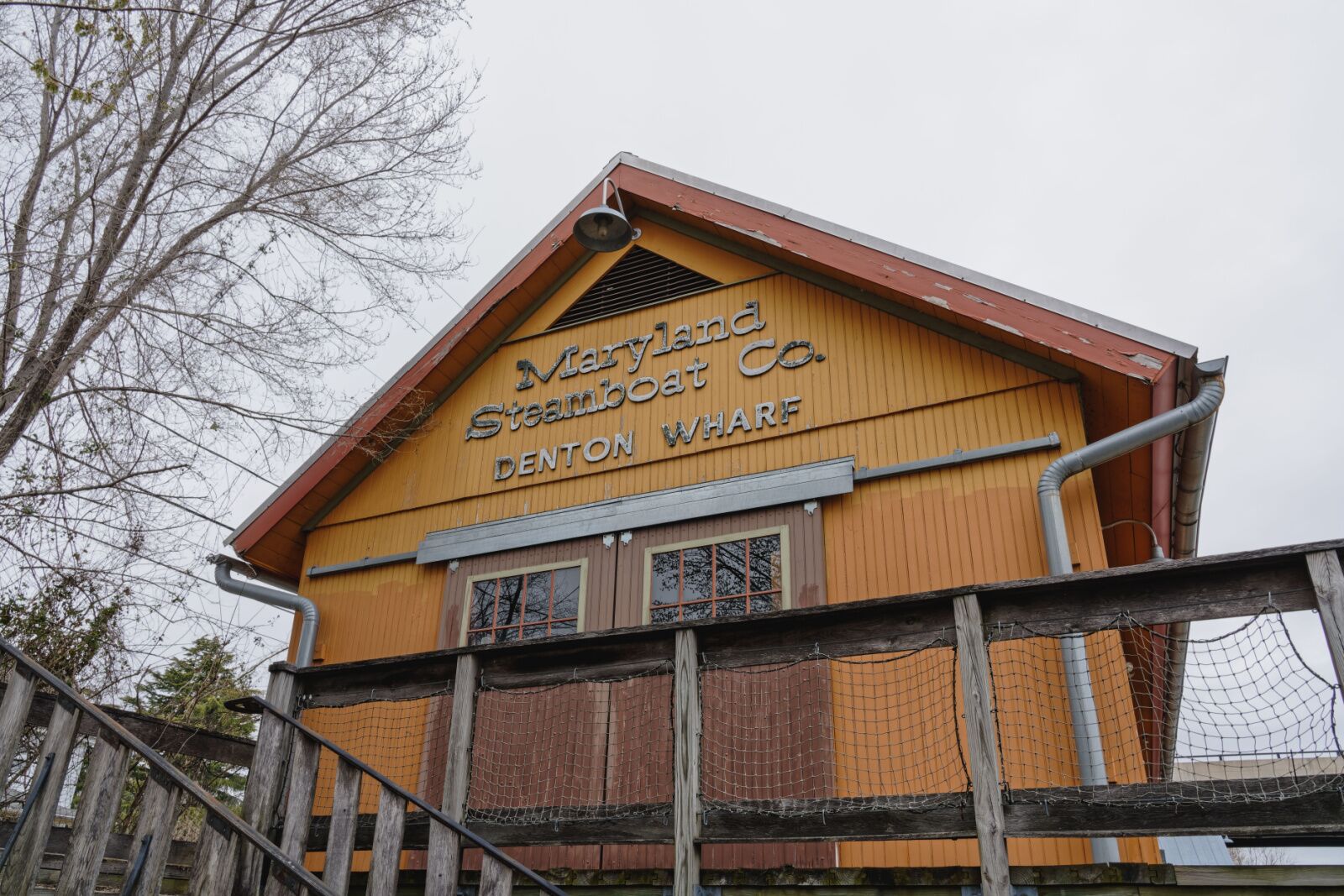
Replica of the Maryland Steamboat Company’s building on the Choptank River along the byway. Photo: Rosemarie Mosteller/Shutterstock
Visitors to Maryland’s Eastern Shore can follow the same trail as Tubman through a self-guided, 125-mile driving tour that visits 36 significant sites, markers, and historical landmarks that were part of the famous Underground Railroad. The journey begins at the Harriet Tubman Underground Railroad Visitors Center in Church Creek, and follows a trail of waterways and towns through Dorchester and Caroline counties. It eventually crosses the border into Delaware and ends in Philadelphia, where escaped slaves would finally find freedom.
Begins at the Harriet Tubman Underground Railroad State Park and Visitor Center: 4068 Golden Hill Rd, Church Creek, MD 21622
The Hill Community Project, Easton
Located in Easton, The Hill is an Eastern Shore neighborhood and one of America’s oldest free Black communities still in existence. Though the Hill was officially founded in 1788, records as old as the 1670s tell of a thriving community of free people of color working as merchants, sailors, and laborers long before the start of the Civil War.
Today, visitors can take a self-guided walking tour of sites in the Hill Community. On the tour is the Buffalo Soldier House (stop #9), believed to be the residence of a “buffalo soldier,” – the nickname for members of one of the US Army’s first primarily black cavalry divisions. Also nearby is 925 Port Street, an original home connected to the Underground Railroad, the Civil War, and the War of 1812.
Other important stops include the Bethel AME Church and Asbury United Methodist Church. Both churches were dedicated by Frederick Douglass in 1878 and served as centers for religious and community life for decades following the Civil War. In addition to the free self-guided tour, private walking tours can be booked in advance with Dr. Dale Green, one of the nation’s foremost experts on Black History and a leader in the efforts to preserve the community.
The Hill: Walking tour starts at the intersection of Harrison Street and South Lane in Easton, MD
Talbot County Courthouse, Easton
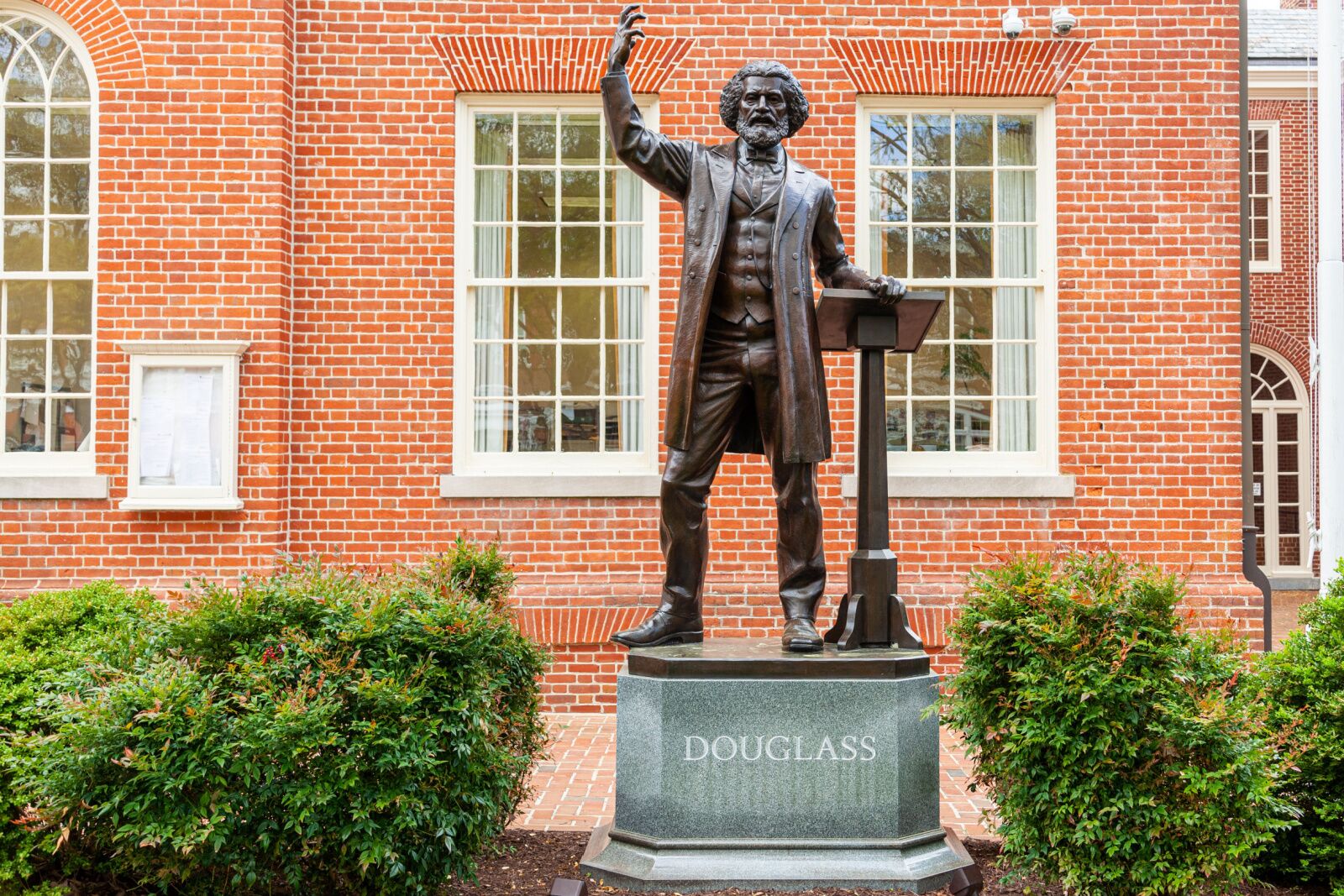
Easton, MD: Statue of the famous reformist abolitionist African American leader Frederick Douglass. Photo: grandbrothers/Shutterstock
Frederick Douglass’ memoir, “Narrative of the Life of Frederick Douglass,” was an immediate bestseller after it was published in 1845. Douglass’ brutal accounts of enslaved life named specific plantations and didn’t sugar-coat the brutality of slavery, and Douglass’s courage to publish it under his true name inspired other enslaved men and women to seek their own freedom. He was invited to public events around the country, one of which was in his hometown of Easton, Maryland, to speak to a segregated crowd of Blacks and whites.
On November 25, 1878, he delivered his now-famous speech entitled “Self-Made Men.” His words would go on to inspire millions with messages of hope and resilience. Though the original courthouse where he spoke burned in a fire, a large bronze statue of Frederick Douglass stands in front of the current courthouse.
Talbot County Courthouse: 11 N. Washington St., Easton, MD 21601
St. Stephens AME Church, Unionville
- Hours: Services every Sunday at 10:30 AM
- Costs: Free
As one of Maryland’s first free Black communities, the town of Unionville in Talbot County exemplifies the perseverance of the African-American community during the Civil War.
Unionville was originally known as Cowgillstown after the local landowner Ezekial Cowgill. In 1856, Cowgill, a Quaker and Union supporter, gifted a parcel of land to 18 Black soldiers on their return from fighting in the Civil War. The only stipulation for their leases was that they build a church and school to educate their children. Their original St. Stephens AME Church, a white clapboard chapel, still stands today and holds services every Sunday. The 18 Black Union soldiers are buried in the church’s cemetery.
St. Stephens AME Church: 9467 Unionville Road, Easton, MD 21601
Brodess Farm and Bucktown General Store
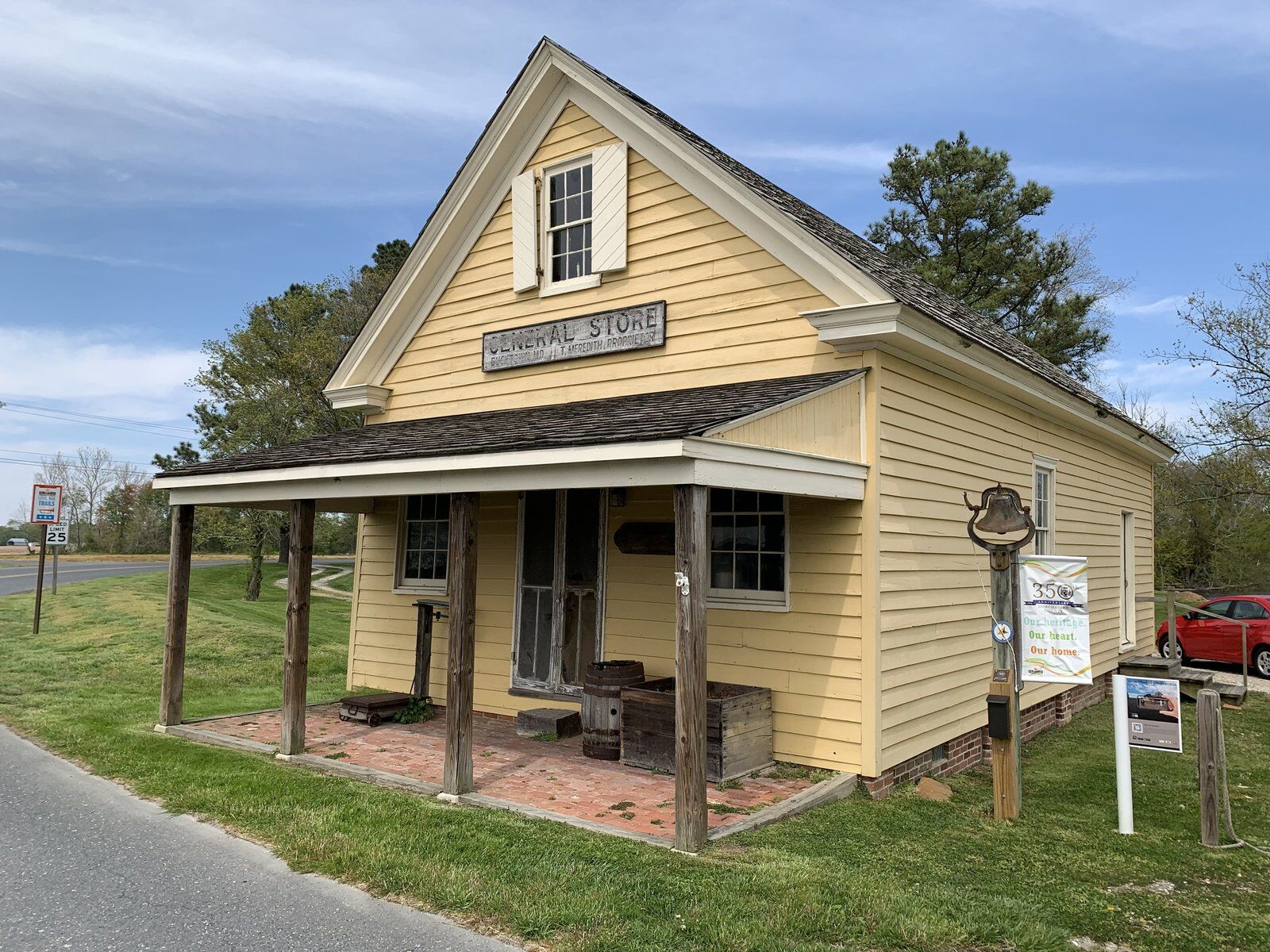
The Bucktown General Store near Cambridge, Maryland. Photo: Visit Maryland
- Hours: General Store: Monday-Saturday “by chance or by reservation” / Blackwater Refuge: Daily, dusk to dawn
- Costs: General Store: Free, donations accepted / Blackwater Refuge: $3 per car
The Brodess Farm, where Harriet Tubman was born and enslaved, is outside the town of Cambridge on the grounds of the Blackwater National Wildlife Refuge. While Blackwater National Wildlife Refuge, with its miles of bike trails and walking paths, offers a firsthand glimpse of the natural landscape where Tubman worked and lived, the Brodess Farm remains a parcel of unspoiled private farmland.
But just down the road from the farm is the Bucktown General Store, a pristinely preserved general store from the Civil War era. The store played a significant role in Tubman’s life, as it was there that she was knocked unconscious when an owner of a nearby plantation threw a weight, hitting Tubman in the head. For the rest of her life, she would suffer from dizzy spells and visions, one of which gave her the idea for the Underground Railroad.
Bucktown General Store: 4303 Bucktown Rd, Cambridge, MD 21613
Blackwater National Wildlife Refuge: 3185 Key Wallace Dr, Cambridge, MD 21613
Waters Edge Museum, Oxford
- Hours: Friday-Sunday, 10 AM-4 PM
- Costs: Free
Founded in 2001, the Waters Edge Museum in Oxford is the first museum in America to celebrate what it calls the “Founding Black Families of America.” The museum highlights paintings, drawings, literature and music that honor the legacy of Black Americans. With rotating exhibitions, the museum’s immersive collection documents these Founding Black Families and their working lives in the farming and maritime industries. The official hours are only Friday, Saturday, and Sunday, but it can other times by appointment if you reach out in advance.
Water’s Edge Museum: 101 Mill St, Oxford, MD 21654
Pine Street, Cambridge
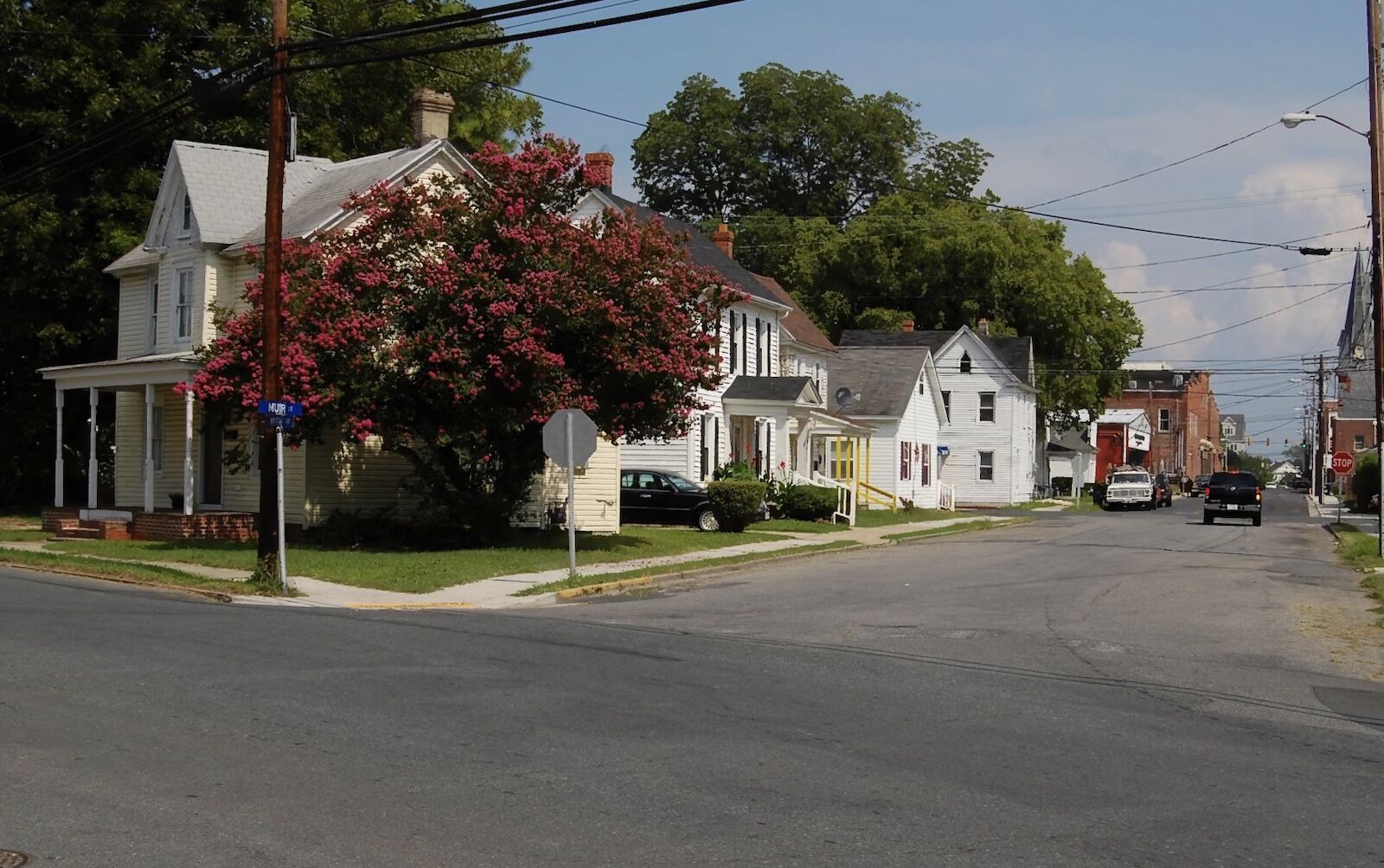
Pine Street Neighborhood Historic District. Photo: National Register of Historic Places Collection/Public Domain
Pine Street in Cambridge has been a continuously occupied African-American community since the early 1800s and is now listed on the National Register of Historic Places. It was site of several prominent Black history events, including civil rights demonstrations in the 1960s that attracted national attention.
Neighborhood landmarks include Long Wharf on the Choptank River, where enslaved people were sold to plantation owners; the Dorchester County courthouse, where Harriet Tubman engineered the first escape along the Underground Railroad; and the Waugh Chapel United Methodist Church, founded by free Blacks in 1826. A guided walking and audio tour of the Pine Street district also reveals the neighborhood’s legacy as one of the nation’s first “Black Wall Streets” and as a stop on the “Chitlin’ Circuit” – a group of towns and music venues that welcomed musicians like Duke Ellington and Ella Fitzgerald during the days of segregation.
Begins at Long Wharf: Intersection of Water St. and High St., Cambridge, MD 21613
Chesapeake Mural Trail

A mural featuring Harriet Tubman on the Chesapeake Mural Trail. Photo: Visit Maryland
The Chesapeake Mural Trail is a series of more than 20 murals celebrating the region’s culture, wildlife, and local heritage, with more a handful dedicated to the legacy of African Americans on the Eastern Shore.
The nationally renowned mural ‘‘Take My Hand” is a tribute to Harriet Tubman, while the “African-American Heritage” mural celebrates the town of Cambridge’s role in Black history. Both were created by internationally renowned muralist Michael Rosato, an Eastern Shore-resident with works in the Smithsonian. Other murals include the Coretta Scott King mural, a Black Lives Matter mural, and the Pine Street mural, highlighting the Cambridge community once known as “Black Wall Street.” You can download a mural audio app for iOS or Google Play.
Begins at the Harriet Tubman Museum & Educational Center: 424 Race St, Cambridge, MD 21613